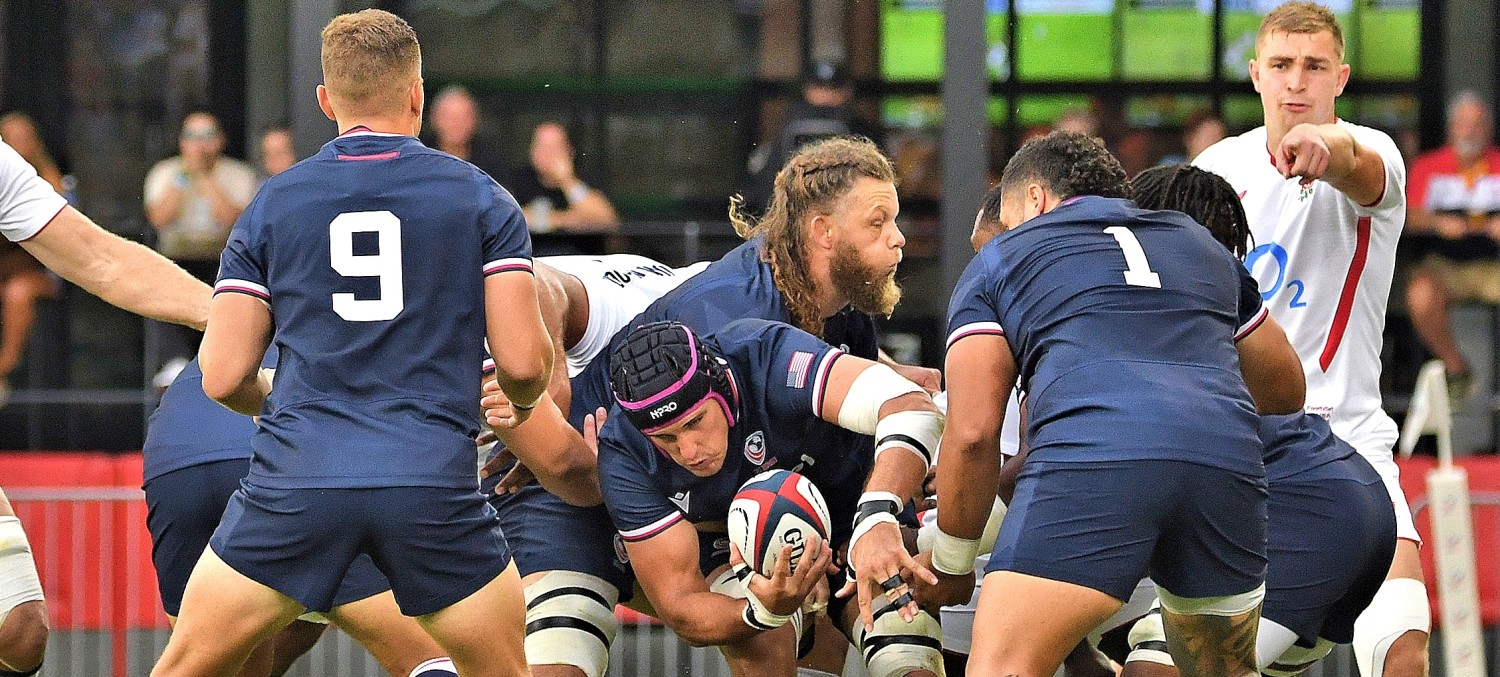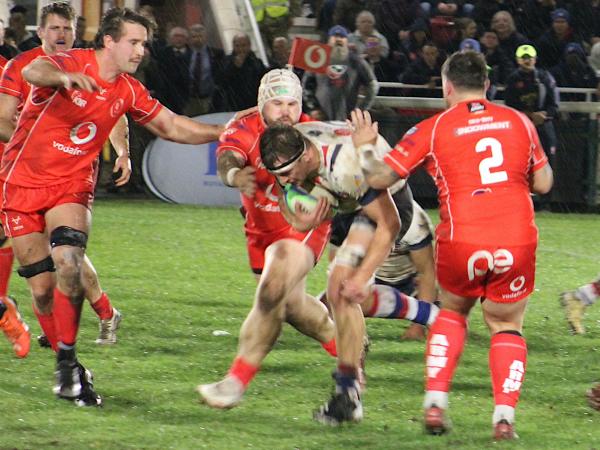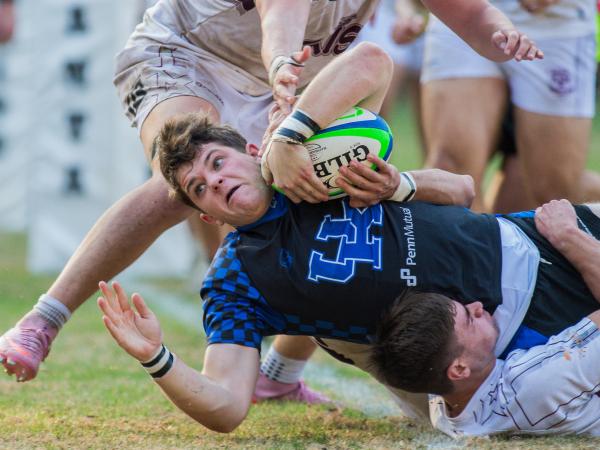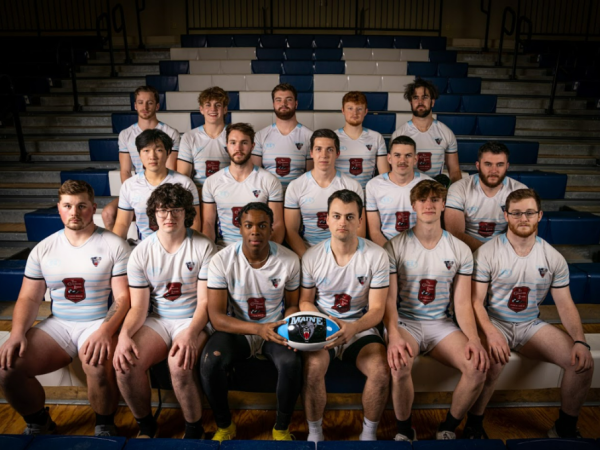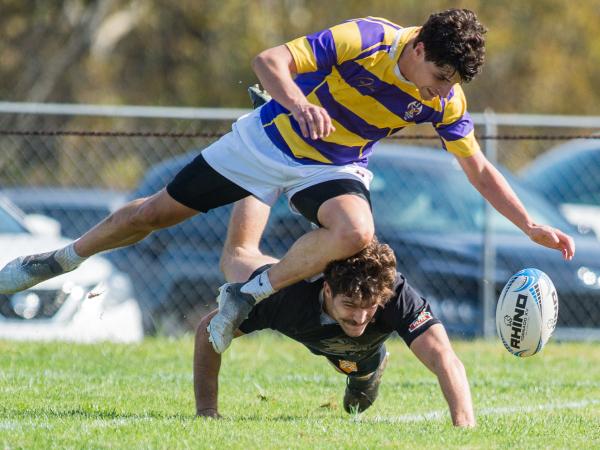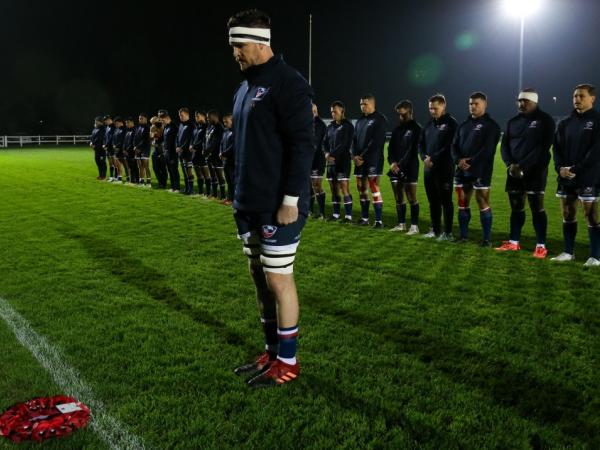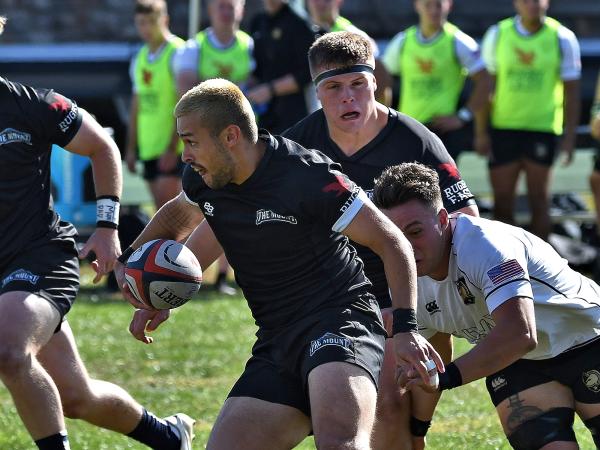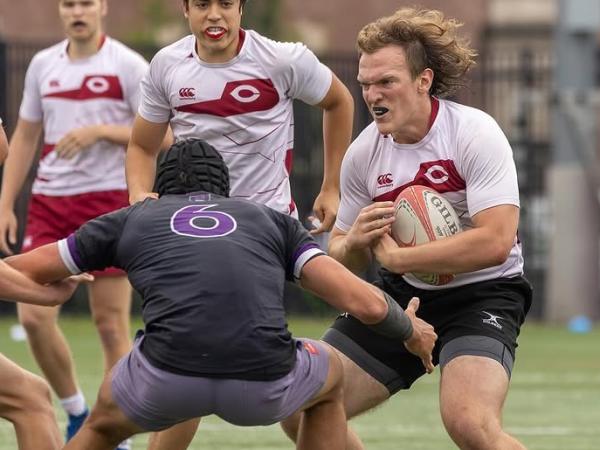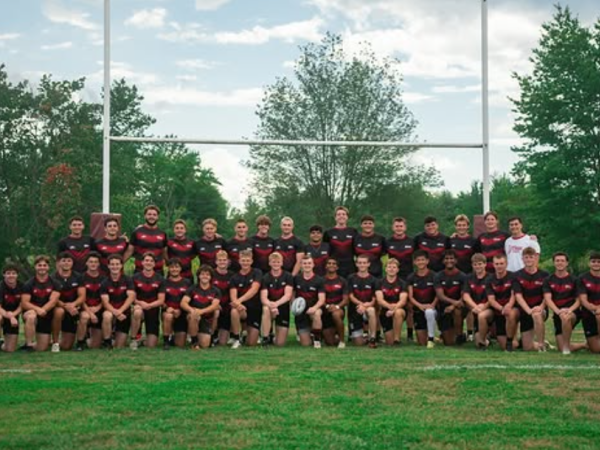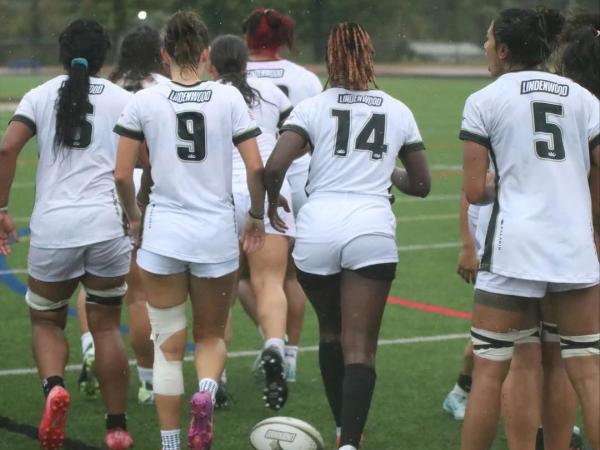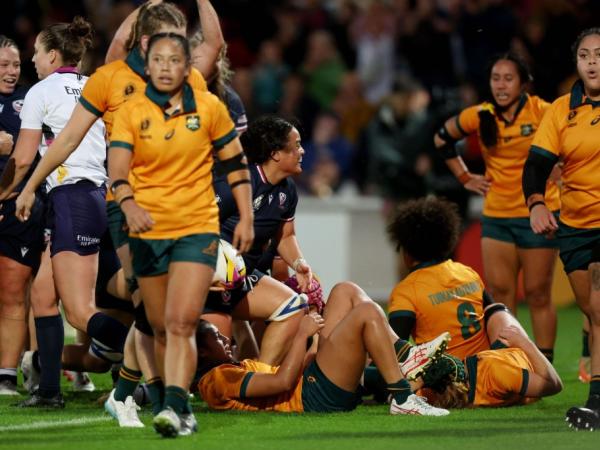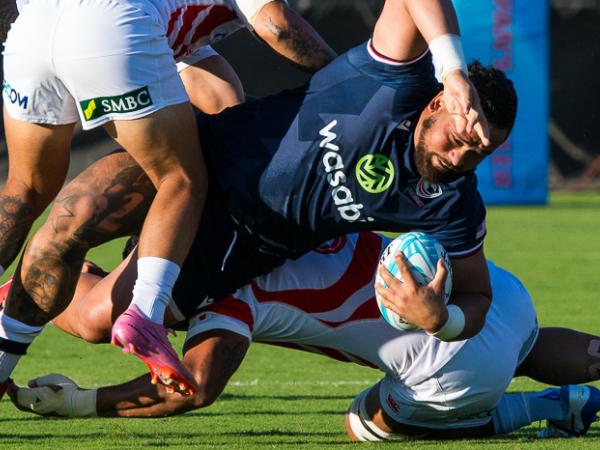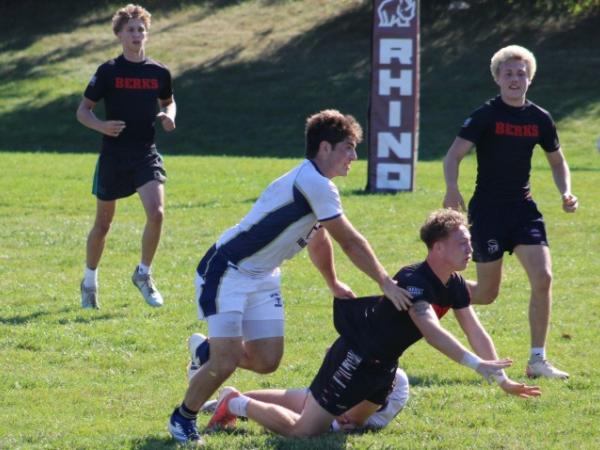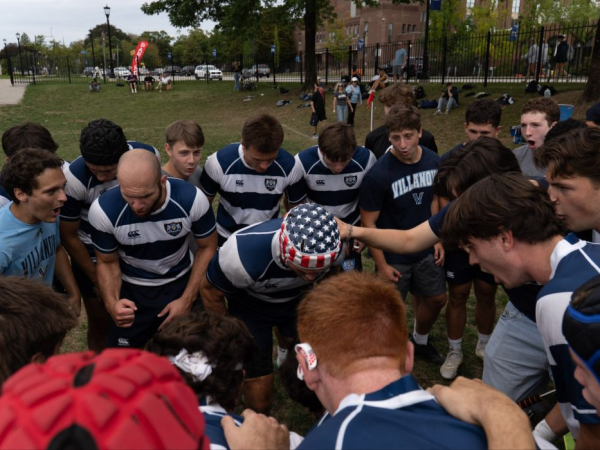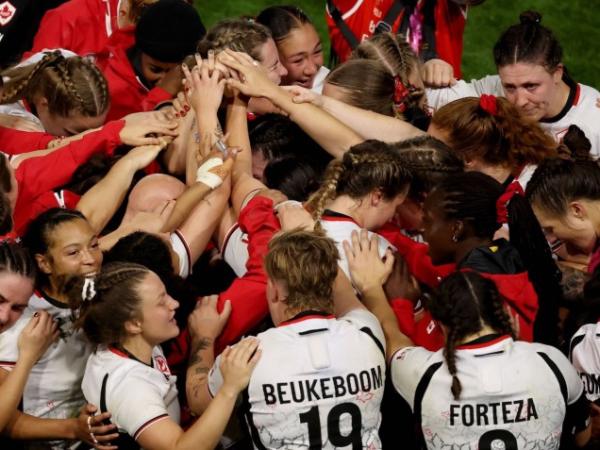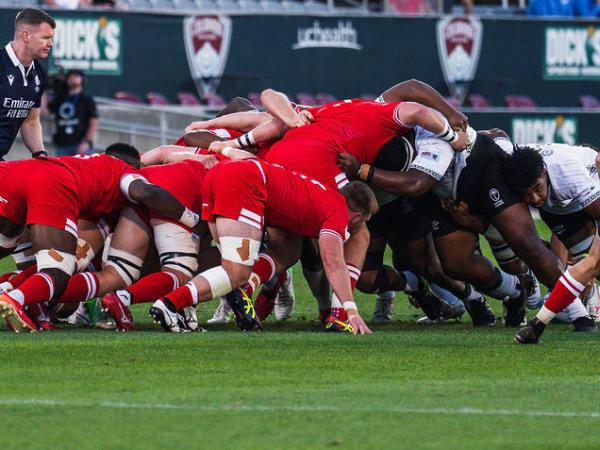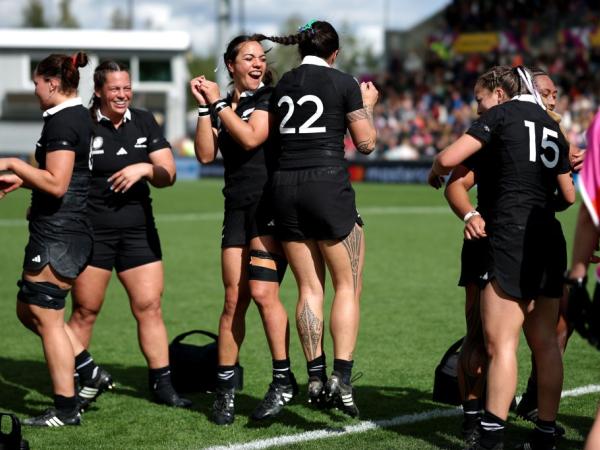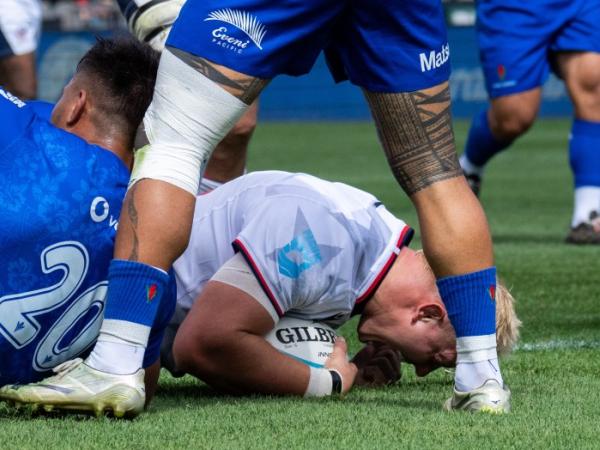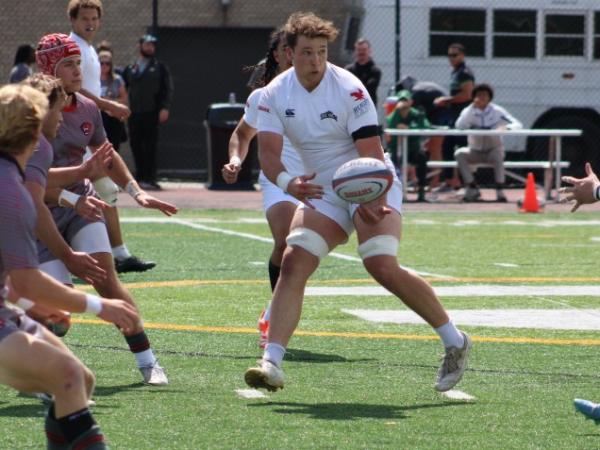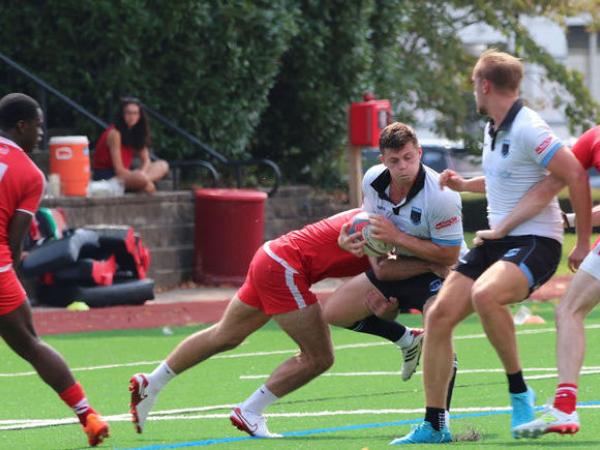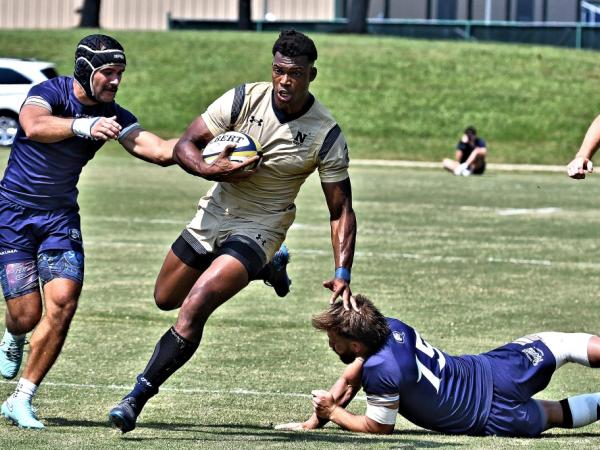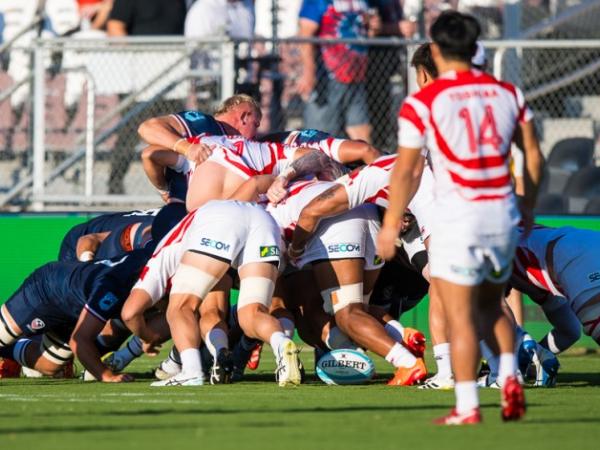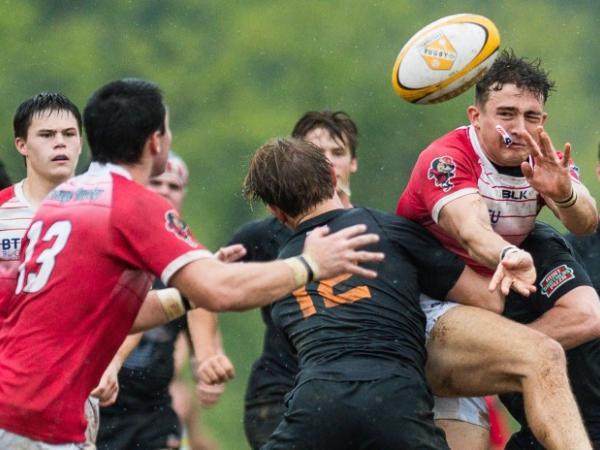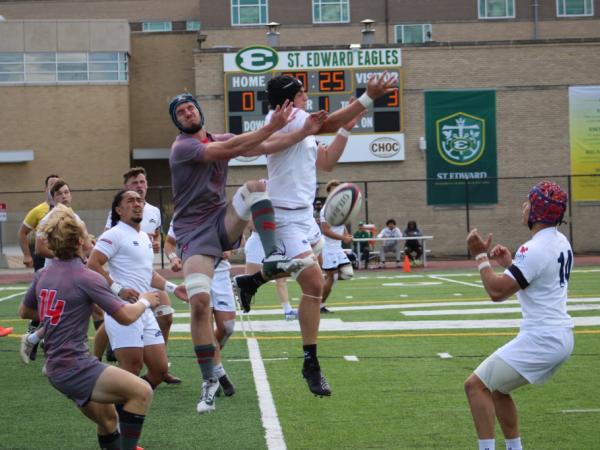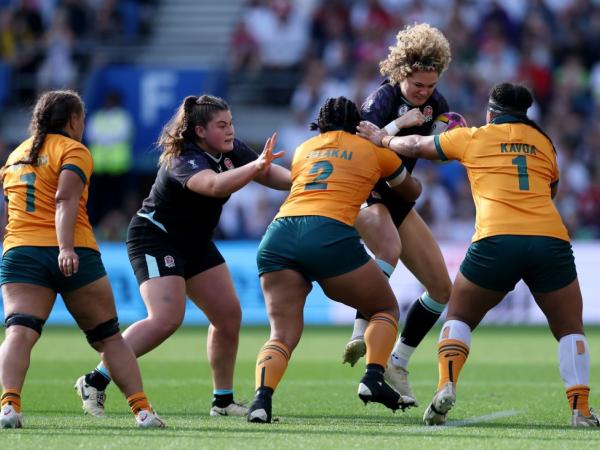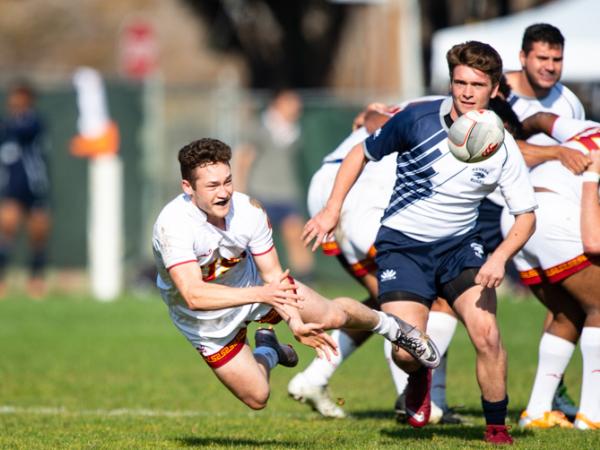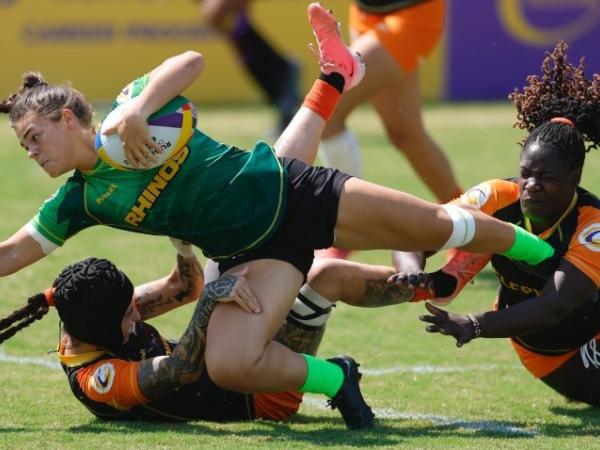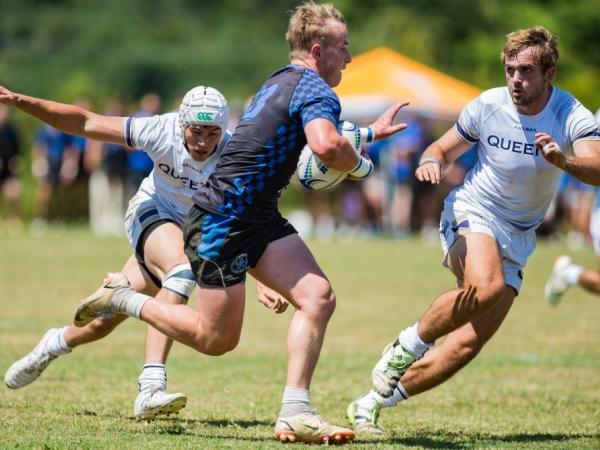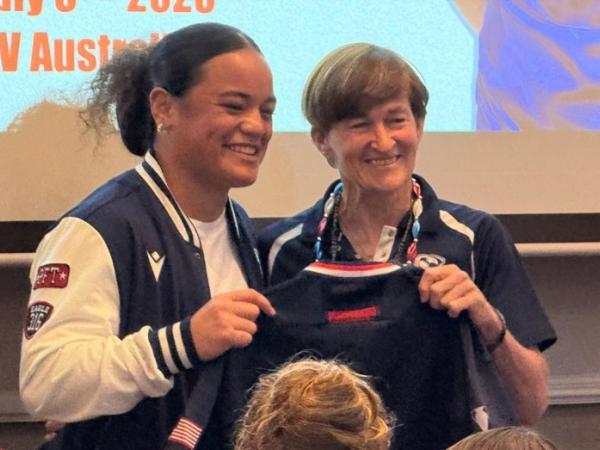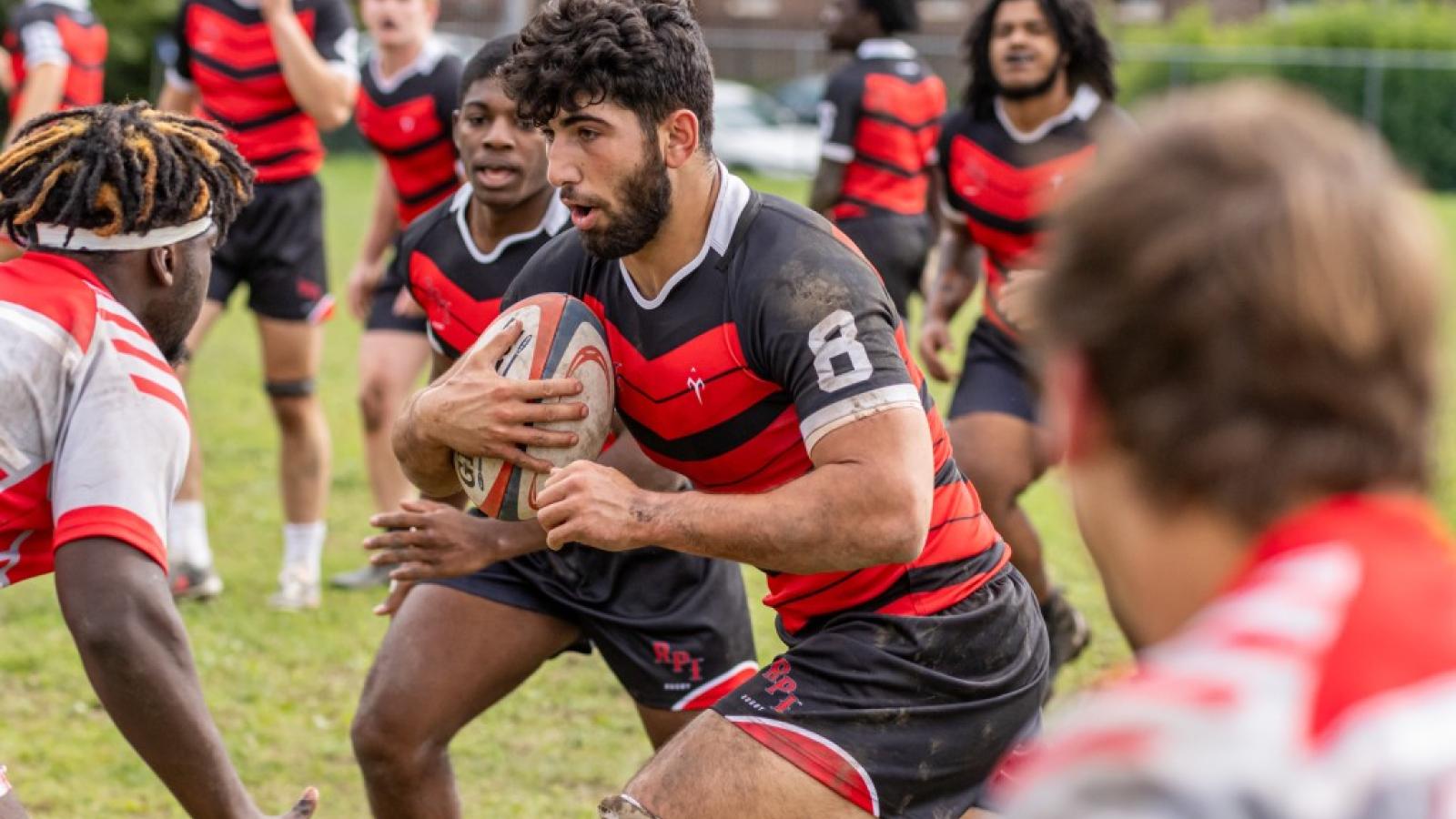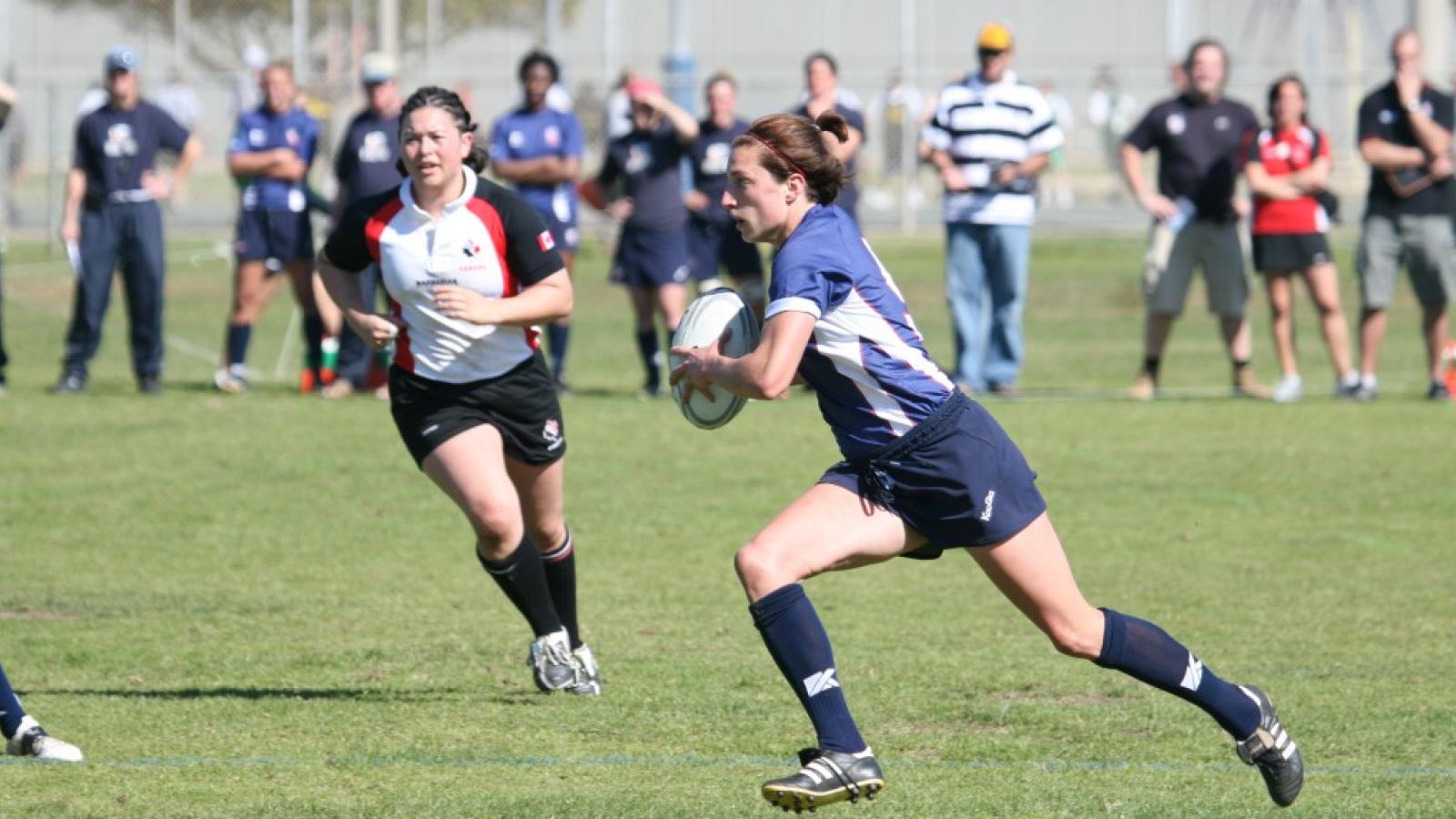Why the USA Lost
The Eagles couldn't get out of their half. England was very good at playing in the opposing end. George Ford was excellent at using the boot to pin the Eagles back, and the Eagles were not great at getting out of trouble. Ruben de Haas's box kicks were solid. Flyhalf Chris Hilsenbeck will likely say himself that he didn't get enough distance on some of his kicks.
In the post-match press conference, USA Head Coach Scott Lawrence pointed out that England made more handling errors than the USA.
And while that's true, England did have the ball a lot more. What our comment on the USA's ball-handling points to is that the Eagles made a few handling errors at crucial moments, either deep in their own 22 when they needed to kick out of trouble, or in an attacking position where they needed high-end execution to get points against a very good defense.
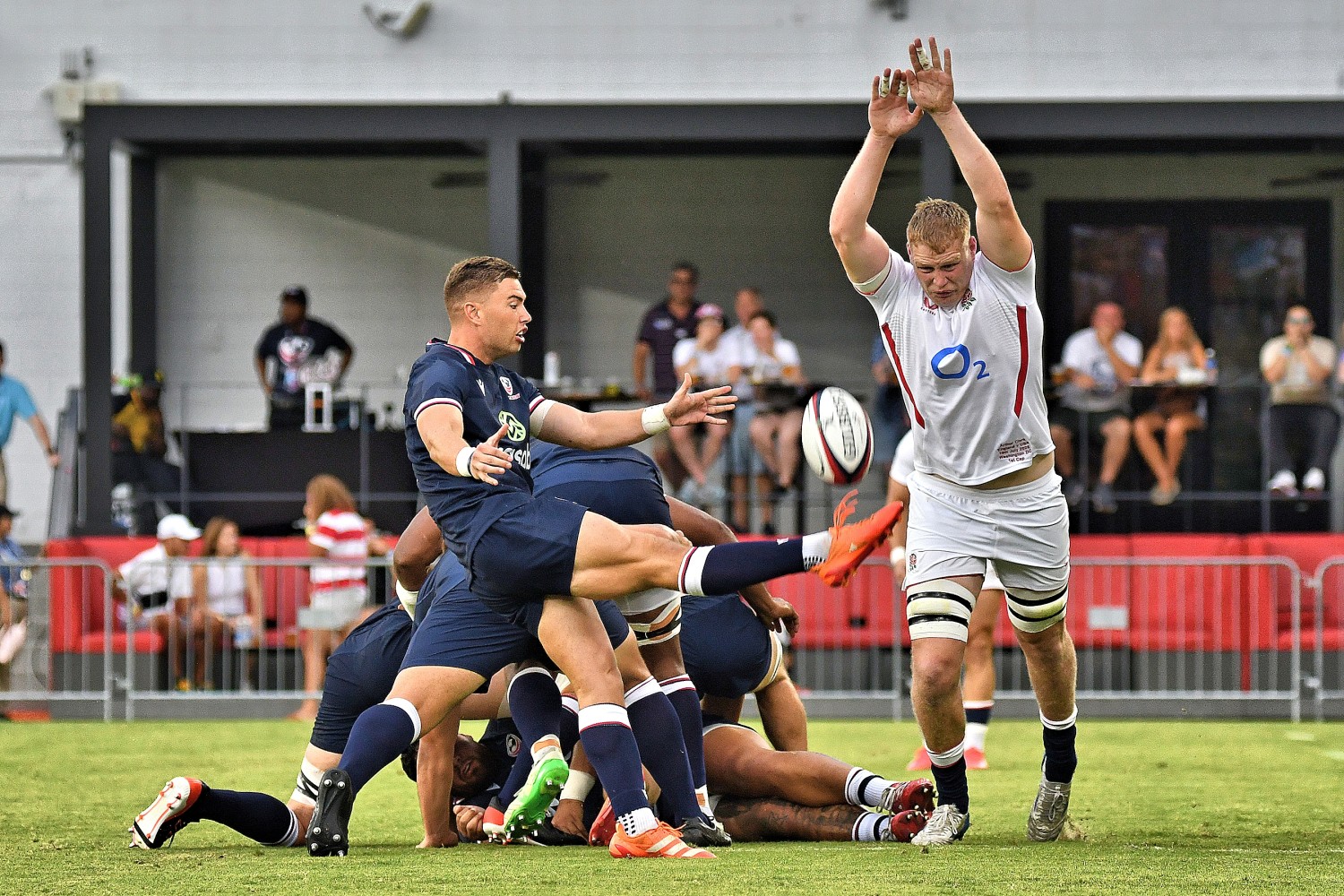
Ruben de Haas launches a box kick. David Hughes photo.
And our comment about experience holds true. Track the contact moments and you'll see a correlation between number of caps and how often a player held onto the ball. So the Eagles didn't convert on the small number of try-scoring opportunities that presented themselves. And when they played tenacious defense, battled and battled and forced a turnover in their own 22 (and they did that quite a bit), too many times a player trucking it up to prepare for a clearance lost the ball again.
Under so much pressure, the USA might have capitulated. Hey, it happens. Two or three times they were badly exposed on backline plays (what is this magic you call a loop??), but somehow they scrambled and held on.
They gave up six tries, sure, and three were called back, but overall the USA team made England work for it, and Ford said as much.
And as Lawrence said, they learned a lot about how to defend.
That One Try
The Eagles scored a very nice try and what's worth pointing out here is that the players, with the game basically over, decided to go for the score and decided to unveil a set play to do it.
These kinds of set plays of course require concentration and a commitment to executing it well. It was late in the match, and even when the bench players were involved, they ran the risk of being over-eager and making a mistake that way. In the end they ran a nice lineout, Tevita Naqali nabbed Shilo Klein's throw nicely and Klein got himself into position quickly. In came Christian Poidevin, who spun around off the back of a potential maul, ran between the group of players and England scrumhalf Harry Randall, and as a result forced Randall to commit to tackling the USA flanker.
That left Klein all alone, and Poidevin was thinking offload all the way, and offloaded nicely.
Again, this was clearly a planned play designed to create a try for the hooker. To have it executed this way shows how the Eagles can performn.
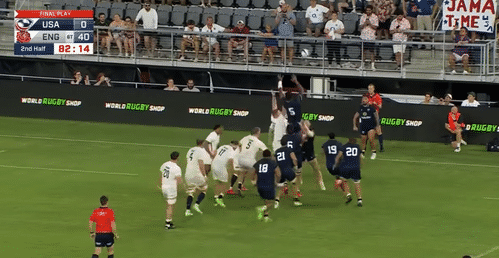
Going Forward
The message to the Eagles is this: now you've seen it. Now you've been there. Now you know what happens if you can't at least match an opponent's kicking game. Now you know what happens when you make mistakes against smart teams. If you're plan is to bash it up a few times, force defenders in, and then go wide ... and that's kind of everyone's plan in one way or another ... you have to maintain possession. One extra meter means nothing if you cough up the ball.
The message is also: If you're new to test rugby, now you know how fast it is, how physical it is, how uncompromising it is. Now, can you execute skills—tackle, catch-pass, offload decisions, clearouts, ball placement, kicks—within that chaotic environment? Not everyone can.
And the message is this: Guess what? None of that stuff mattered. Beating Belgium, losing to Spain, losing to England were all a precursor to the Pacific Nations Cup and the World Cup Qualifiers. These earlier tests were a chance to find out what the coaches needed to find out about players and the success of their approach. Now comes the serious games.
